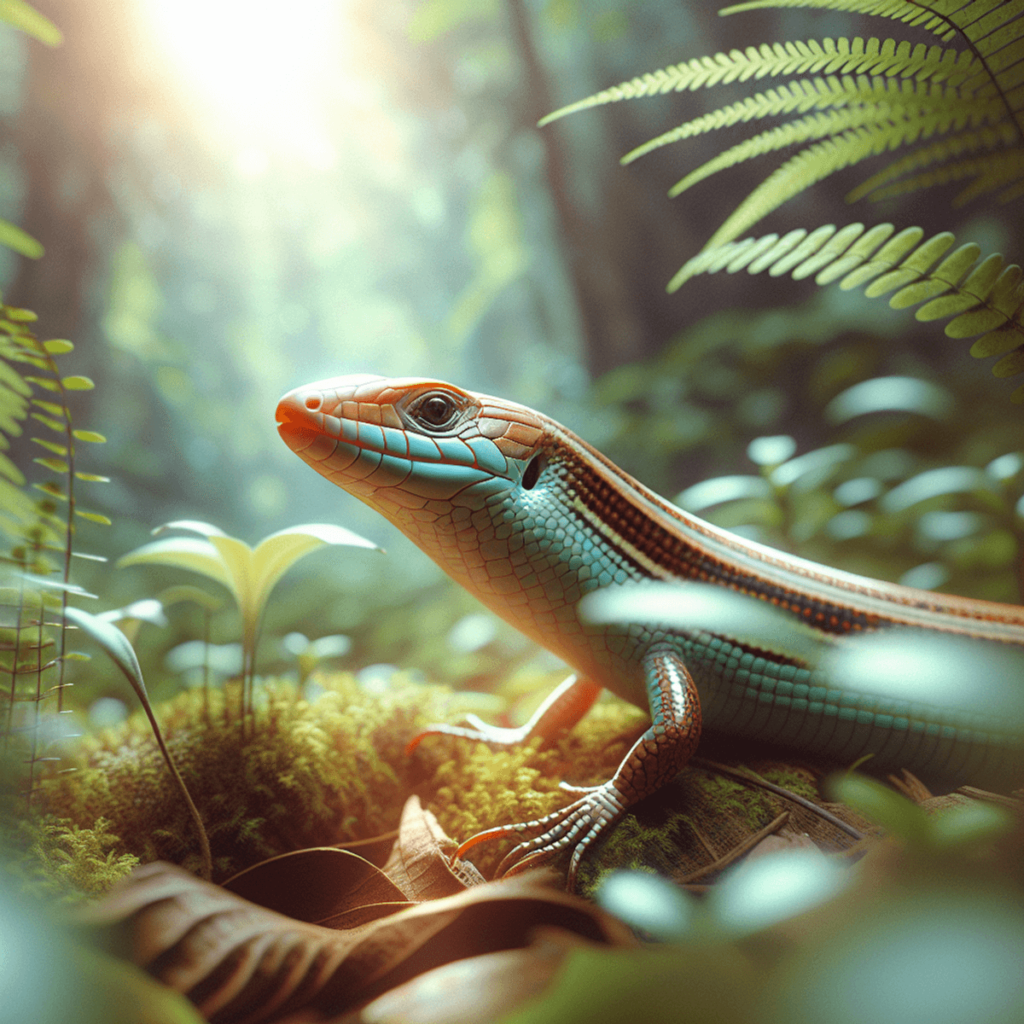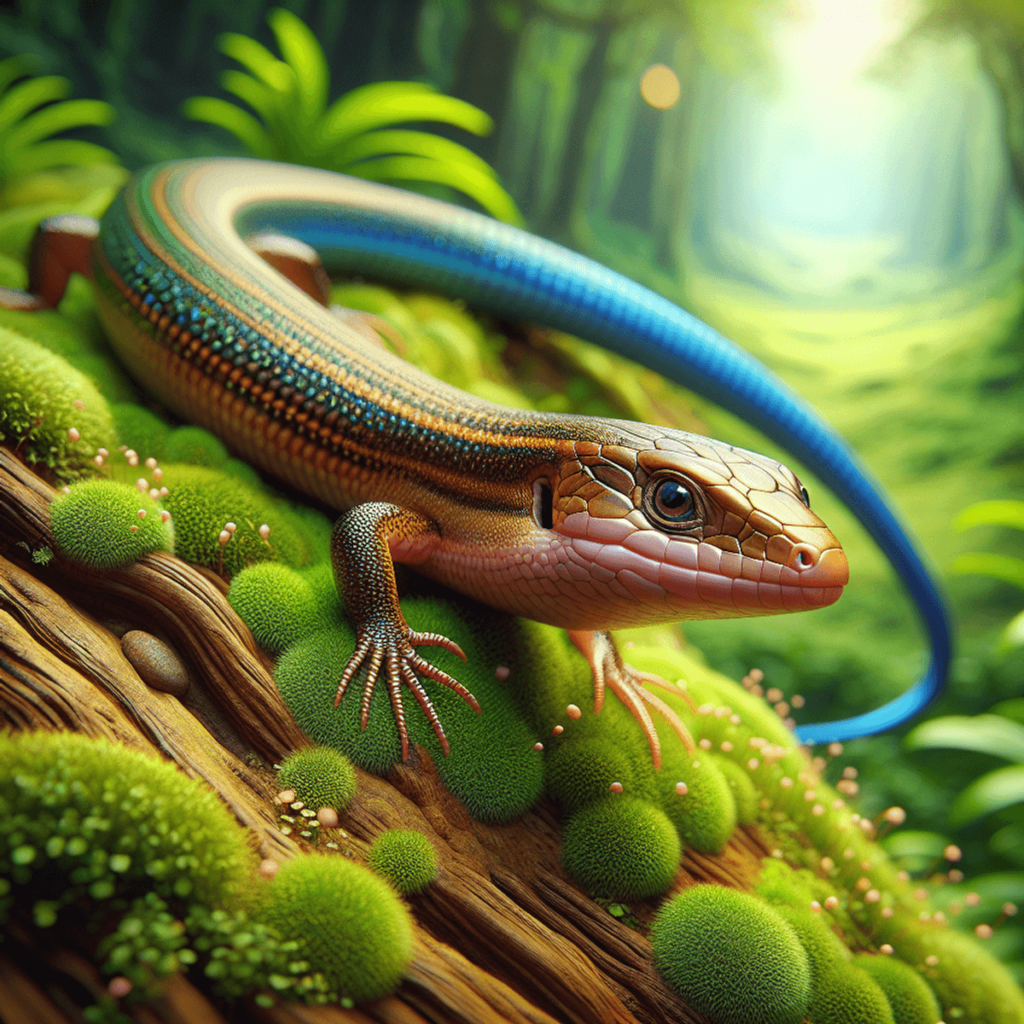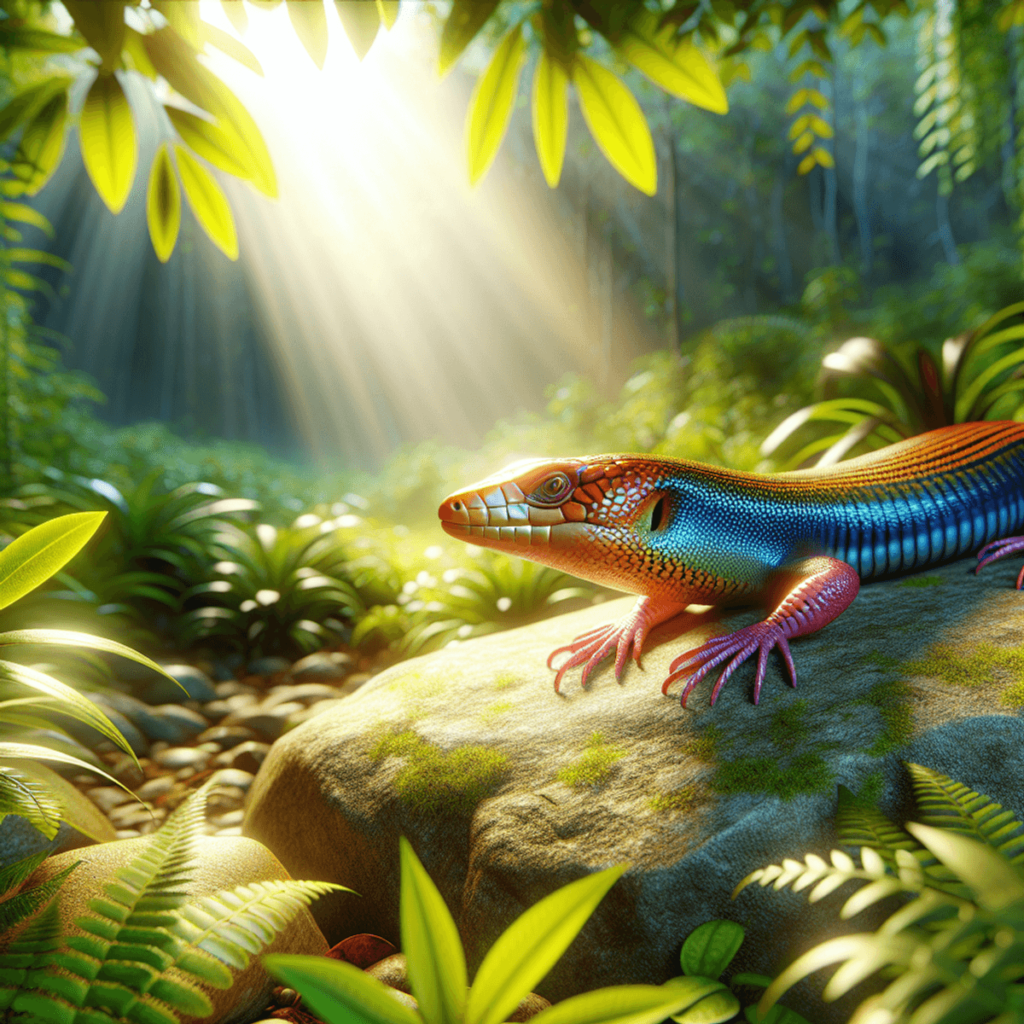
What Do You Know About Skink? The Ultimate Guide
Have you ever wondered about Skink? These fascinating creatures belong to the Scincidae family, one of the most diverse groups of reptiles with over 1,500 species. Skinks are often recognized by their long bodies and relatively small limbs, making them unique among lizards.

Importance in Ecosystems and Biodiversity
Skinks play an important role in ecosystems around the world. They help control insect populations, serve as food for larger animals, and improve soil health through their digging activities. Their presence is crucial for maintaining ecological balance and supporting biodiversity.
What You’ll Learn from This Article
This ultimate guide will take you through:
- Understanding Skinks: We’ll explain different skink species, talk about where they live globally, and explore their various habitats.
- Behavior and Ecology: Discover what they eat, how they hunt, and their reproduction methods.
- Conservation Efforts: Find out about community involvement in skink conservation and practical steps you can take to help.
- Identification Guide: Tips on identifying different skink species in the wild.
- Addressing Misconceptions: Clear up common myths about skinks.
Let’s jump into the world of these amazing reptiles!

Understanding Skinks
1. Skink Species Breakdown
Skinks are a marvel of nature’s diversity, with species exhibiting an impressive array of adaptations that allow them to thrive in various environments. Let’s get acquainted with some popular skink species and their fascinating traits.
Common Five-lined Skink
The Common Five-lined Skink (Plestiodon fasciatus) is perhaps one of the most recognizable skinks due to its striking appearance:
- Distinct Coloration and Markings: Juveniles sport vibrant blue tails and five yellowish stripes running down their black bodies, making them easy to identify.
- Adult Color Changes: As they mature, the blue tail fades, and males often develop reddish-orange coloration on their heads during the breeding season.
- Habitat Preference: These skinks are commonly found in forests, woodlands, and even suburban areas where they can bask on logs and rocks.
Broadhead Skink
Another noteworthy species is the Broadhead Skink (Plestiodon laticeps), known for its robust physique:
- Larger Size and Shape: This skink stands out due to its larger size, reaching up to 13 inches in length. Its broad head is especially pronounced in males.
- Color Variations: Males exhibit stunning orange-red heads during the breeding season, while females and juveniles have more subdued brownish colorations with light stripes.
- Behavioral Traits: Broadhead Skinks are semi-arboreal, often seen climbing trees and shrubs. They are also known for their aggressive territoriality.
Unique Traits of Plestiodon Species
The Plestiodon genus includes several species notable for their vibrant colors and smooth scales:
- Vibrant Colors: Many Plestiodon species boast eye-catching hues. For example, the Plestiodon obsoletus, or Great Plains Skink, has a mosaic-like pattern of dark spots on its shiny scales.
- Smooth Scales: These skinks have exceptionally smooth scales that give them a sleek appearance, aiding in their swift movement through various terrains.
- Adaptability: Members of this genus are highly adaptable, inhabiting diverse environments from rocky deserts to moist forests.
2. Global Distribution and Habitat Diversity
Skinks display an incredible range of habitats across the globe:
- Range of Habitats: From tropical rainforests teeming with life to arid deserts where survival is a daily struggle, skinks have adapted to nearly every type of environment except arctic regions.
- Regional Comparisons: In tropical areas like Southeast Asia, skinks such as the Eutropis multifasciata thrive in humid conditions. Conversely, desert-dwelling skinks like the Scincus scincus, or Sandfish Skink, have evolved to “swim” through sand efficiently.
Understanding these differences helps us appreciate how each skink species has uniquely adapted its behavior and physical characteristics to suit its environment. Their incredible adaptability not only showcases nature’s ingenuity but also highlights the importance of preserving diverse habitats for these remarkable reptiles. For more information on these fascinating creatures, you can refer to this [resource](https://www.britannica.com/animal/sk

2. Global Distribution and Habitat Diversity
Skinks, such as the Common Five-lined Skink, Broadhead Skink, and Plestiodon species, thrive in a variety of habitats around the world. Their adaptability to different environments sets them apart from many other reptiles.
Range of Habitats
- Tropical Rainforests: These dense, humid forests provide ample cover and abundant food sources. Skinks like the Plestiodon elegans are often found here, using their bright colors to blend into the vibrant surroundings.
- Arid Deserts: Surprisingly, some skinks have adapted to survive in harsh desert climates. The Sandfish Skink (Scincus scincus) is known for its ability to “swim” through the sand, evading predators and extreme heat.
- Grasslands and Savannas: These open areas are home to species like the Broadhead Skink. Their larger size and robust build allow them to navigate through tall grasses and low shrubs effectively.
- Urban Areas: Some skinks have even adapted to live in human-modified environments. The Common Garden Skink (Lampropholis guichenoti) often resides in suburban gardens and parks.
Regional Influences on Behavior and Adaptations
- In tropical regions, skinks tend to exhibit more vibrant coloration, which aids in camouflage among lush foliage.
- Desert-dwelling skinks often develop unique locomotion methods, like burrowing or sand-swimming, to cope with the extreme temperatures and sparse vegetation.
- Skinks in temperate regions may show seasonal behavioral changes, such as hibernation during colder months or increased activity during breeding seasons.
Skinks’ ability to adapt to diverse habitats highlights their incredible evolutionary success and species diversity. From rainforests teeming with life to barren deserts where survival is a daily challenge, skinks have carved out a niche for themselves across the globe.
Behavior and Ecology of Skinks
1. Diet and Hunting Techniques of Skinks
Skinks have some interesting behaviors, especially when it comes to what they eat and how they hunt. These reptiles mostly eat insects, but they also occasionally eat plants.
Typical Diet
- Insects: Skinks mainly feed on insects like beetles, crickets, and ants.
- Plant Matter: Some skink species also eat fruits, flowers, and small amounts of leaves in addition to insects.
- Small Rodents: Although less common, larger skink species may prey on small rodents if given the chance.
Personal Anecdote: I remember the first time I saw a skink in my backyard—it was moving really fast, catching ants with amazing accuracy. It’s incredible how good these tiny hunters are!
Hunting Techniques
Skinks use different strategies to catch their prey:
- Ambush Hunting: Many skinks use a sit-and-wait strategy. They stay hidden in a spot until an unsuspecting insect gets too close. Then, they quickly move and capture their prey.
Fun Fact: Some skink species can stay perfectly still for hours while waiting for the right moment to strike.
- Active Foraging: Other skinks actively search for food by moving around their environment. This involves constant movement and using their sense of smell to find prey.
- Sense of Smell: Skinks have a highly developed sense of smell. They flick out their forked tongues to pick up scent particles, which are then analyzed by an organ in their mouth.
- Visual Cues: Skinks also rely on their sharp eyesight to detect movement. This combination of senses helps them find food in different environments.
Observations show that environmental factors play a big role in determining which hunting technique a skink might use. For example, in areas with lots of vegetation where it’s hard to see, ambush tactics might work better. On the other hand, in open spaces like deserts or grasslands, active searching becomes more common.
Expert Insight: Researchers have noticed that skinks’ hunting methods can change based on the availability of food sources. When there’s not much food around, they may become less picky and eat more plants to survive.
Understanding these behaviors not only shows how adaptable skinks are but also highlights their importance as predators in their ecosystems. They help control insect populations and maintain balance in their habitats.
2. Reproduction Strategies in Skinks
Skinks have fascinating ways of reproducing, and they can be grouped into two main categories: those that lay eggs (oviparous) and those that give birth to live young (viviparous).
Oviparous Skinks
Most skink species fall into this category. Here’s what you need to know:
- Egg-laying: These skinks lay eggs in secure hidden nests, usually in burrows or under rocks.
- Parental Care: While some species might abandon their eggs after laying them, others exhibit a surprising degree of parental care. The female often stays with the eggs, protecting them from predators until they hatch.
Viviparous Skinks
Around 45% of skink species give birth to live young. This method is particularly advantageous in harsh environments where the survival rate of eggs might be low.
- Energy Investment: Viviparous females invest significant energy into carrying and nourishing their young during gestation, ensuring that the offspring are well-developed at birth.
Skinks also display intriguing mating behaviors during the breeding season. Many species engage in solitary behavior for most of the year but come together for mating purposes.
Mating Behaviors
- Territorial Displays: Males often establish and defend territories to attract females, using visual signals such as head bobbing or displaying vibrant coloration.
- Courtship Rituals: Some species perform elaborate courtship rituals involving specific movements or sounds to entice potential mates.
These reproductive strategies and behaviors ensure that skinks can thrive across diverse environments, adapting their methods to suit their specific ecological niches. Whether through solitary wanderings or diurnal activity patterns, these reptiles continue to captivate anyone curious enough to ask, “What do you know about skink?”
Conservation Status and Efforts for Skink Species
1. Community Involvement in Skink Conservation
Skinks, like many reptiles, face various threats that put them at risk of declining populations. Habitat destruction, climate change, and introduction of invasive species are just a few challenges these resilient creatures encounter. The conservation status of skinks varies significantly across different species, with some listed as endangered due to their dwindling numbers.
Endangered Species Status: Many skink species have been classified under various threatened categories by conservation organizations. For instance, the Blue-tailed Skink (Cryptoblepharus egeriae) from Christmas Island is listed as critically endangered. Awareness of such statuses helps to drive conservation efforts and funding towards protecting these vulnerable populations.
Community involvement plays a pivotal role in skink conservation. Citizen scientists contribute immensely by aiding in the monitoring and data collection necessary to understand and protect local skink populations. Here are some ways community scientists make a difference:
Data Collection
By observing and recording sightings of skinks in their natural habitats, citizen scientists help build comprehensive databases that inform conservation strategies. Platforms like iNaturalist allow individuals to upload photos and observations, contributing valuable data used by researchers worldwide.
Habitat Restoration Projects
Community volunteers often participate in habitat restoration initiatives such as removing invasive plants or reforesting areas with native vegetation. These efforts create better living conditions for skinks and other wildlife.
Educational Outreach
Engaging local communities through educational programs helps raise awareness about the importance of skinks in ecosystems. Schools, nature clubs, and community centers can host workshops or activities that teach people about skink biology and conservation needs.
Nest Monitoring
Some skink species lay eggs in communal nests. Citizen scientists can help monitor these nesting sites to ensure they remain undisturbed and report any signs of predation or environmental threats.
One notable example involves the Monk Skink (Eumeces monachus) found in parts of North America. Local groups have spearheaded initiatives to track their movements using radio telemetry, providing critical data on their range and behaviors which aids in crafting effective conservation plans.
By becoming involved in these activities, anyone can contribute to the survival of skinks. The collaborative efforts between professional researchers and passionate community members create a robust network dedicated to preserving these fascinating reptiles for future generations.
2. Practical Steps Individuals Can Take to Help Skinks Survive
What do you know about skink conservation? Here’s how you can make a difference in your own backyard or community:
- Create a Skink-Friendly Habitat: Provide shelter by leaving leaf litter, logs, and rocks in your garden. These natural elements offer hiding spots and protection for skinks.
- Avoid Pesticides: Use organic gardening methods to reduce the risk of poisoning skinks and their insect prey.
- Water Sources: Place shallow water dishes around your yard. This provides hydration, especially during hot weather.
- Participate in Local Conservation Initiatives: Join community scientists’ efforts to monitor skink populations. Organizations often look for volunteers to assist with data collection.
- Support Legislation: Advocate for policies that protect endangered species status and promote conservation initiatives. The Endangered Species Act plays a crucial role in safeguarding vulnerable skink populations.
- Implement Best Practices for Invasive Species Management: Following guidelines like those in this resource can help manage invasive species that threaten local wildlife, including skinks.
- Engage with Local Wildlife Action Plans: Get involved with local initiatives similar to the Wildlife Action Plan, which often include strategies for protecting various species and their habitats.
Engaging in these simple actions helps protect skinks and promotes biodiversity within local ecosystems.
Identifying Different Skink Species: A Field Guide Approach
Identifying skinks in the wild can be an exciting and rewarding experience. With over 1,500 species of skinks, having a keen eye for detail and knowing what to look for is essential. Here’s a breakdown of key features and some valuable resources to help you become adept at skink identification.
Key Features to Look For
When you’re out in the field trying to identify skinks, there are several characteristics you should pay attention to:
- Coloration and Markings: Many skink species have distinct color patterns. For instance, the Common Five-lined Skink has five light stripes running along its body.
- Body Shape and Size: Note whether the skink has an elongated body or a more robust build. The Broadhead Skink, as its name suggests, has a notably broad head compared to other species.
- Tail Characteristics: Some skinks can regenerate their tails, which often appear in a different color or texture than the original. The vibrant blue tail of juvenile Five-lined Skinks is a prime example.
- Scale Texture: Look at the texture of the scales. Some species like those in the Plestiodon genus are known for their smooth, shiny scales.
- Limb Proportions: Observe the size and placement of limbs. Some skinks have smaller limbs relative to their bodies, while others might even appear limbless.
Resources for Accurate Identification
To ensure accurate identification, especially if you’re new to herping (the act of searching for amphibians or reptiles), utilizing online platforms can be immensely helpful.
Introduction to Helpful Online Platforms
- iNaturalist.org: This is one of the most comprehensive online platforms where you can upload photos of the skinks you encounter. The community and artificial intelligence systems provide identification suggestions based on your images.
“iNaturalist has helped me identify numerous skinks during my hikes. The community feedback is invaluable!” — Jane Doe, amateur herpetologist.
- HerpMapper: Another excellent resource that focuses on reptiles and amphibians. It allows users to document sightings, contributing to global conservation efforts while helping with personal identifications.
“HerpMapper is great for tracking my observations and learning about local species.” — John Smith, wildlife enthusiast.
These tools not only assist in identifying what you see but also contribute valuable data for conservation research. Leveraging technology makes field identification more accessible than ever before.
Embarking on skink identification journeys requires patience and practice but armed with knowledge and digital tools; you’ll soon find yourself becoming proficient in recognizing these fascinating reptiles in their natural habitats.
How the Herping Community Helps Protect Skinks
The herping community plays a vital role in skink conservation through various initiatives and activities. Enthusiasts engage in citizen science projects, which involve:
- Data collection: Members of the community often record sightings, behaviors, and habitats of skinks. This information is valuable for researchers studying population trends and ecological impacts.
- Awareness campaigns: By sharing their knowledge and experiences through social media, blogs, and local events, herpers educate the public about the importance of skinks in maintaining healthy ecosystems.
- Habitat restoration: Many herping groups participate in efforts to restore natural habitats by removing invasive species and planting native vegetation that supports skink populations.
“What do you know about Skink?” This question often sparks curiosity and engagement within the herping community, leading to increased participation in conservation efforts.
Herpers’ passion for these fascinating reptiles translates into meaningful actions that support the survival of various skink species worldwide.
Addressing Misconceptions About Skinks: Setting the Record Straight
Many myths about skinks paint these fascinating reptiles in a negative light. For example, some believe skinks are venomous or dangerous to humans, which is entirely false. Skinks are harmless and play a crucial role in pest control by eating insects.
Another misconception is that skinks damage gardens. While they may dig small burrows, their benefits in managing pest populations far outweigh any minor disturbances. By debunking these myths, we can appreciate the ecological importance of skinks and support their conservation.
Conclusion: Join Us in Protecting These Fascinating Reptiles!
Skinks play an essential role in maintaining ecological balance and biodiversity. By understanding these intriguing reptiles, we can appreciate their unique adaptations and significance. Whether you’re a seasoned herpetologist or just curious about wildlife, there’s always something new to learn about skinks.
Their vibrant colors, diverse habitats, and fascinating behaviors make them captivating creatures worth protecting. Engaging in conservation efforts ensures these reptiles continue to thrive for generations to come.
FAQs (Frequently Asked Questions)
What are skinks and why are they important in ecosystems?
Skinks are a diverse family of reptiles known as Scincidae. They play a crucial role in ecosystems by controlling insect populations and contributing to biodiversity. Their presence indicates a healthy environment.
What are the key characteristics of the Common Five-lined Skink?
The Common Five-lined Skink is identifiable by its distinct coloration, which includes five prominent lines running down its back. It is a small, agile lizard often found in wooded areas.
How do skinks adapt to different habitats around the world?
Skinks exhibit remarkable adaptability to various habitats, ranging from tropical rainforests to arid deserts. Their physical features and behaviors change according to their environment, influencing their survival strategies.
What is the diet of skinks and how do they hunt?
Skinks primarily have an insectivorous diet, feeding on insects with occasional plant matter. They employ hunting techniques such as ambush or active foraging to catch their prey effectively.
What conservation efforts are in place for skink species?
Various conservation initiatives focus on protecting endangered skink species globally. Community scientists play a vital role in monitoring populations, while organizations advocate for protective measures under laws like the Endangered Species Act.
How can individuals help in skink conservation efforts?
Individuals can contribute to skink conservation by participating in local monitoring projects, creating suitable habitats in their gardens, and spreading awareness about the importance of these reptiles in ecosystems.


One thought on “What Do You Know About Skink? The Ultimate Guide”
Comments are closed.